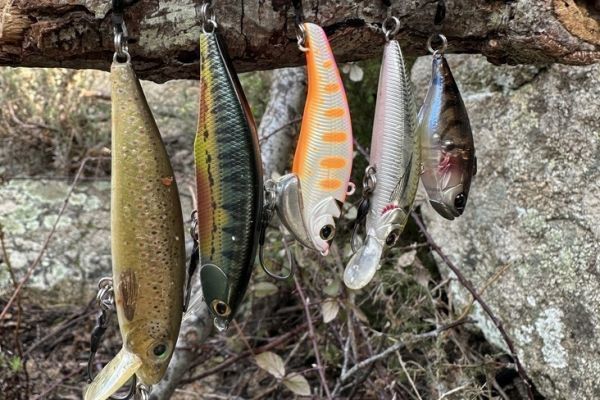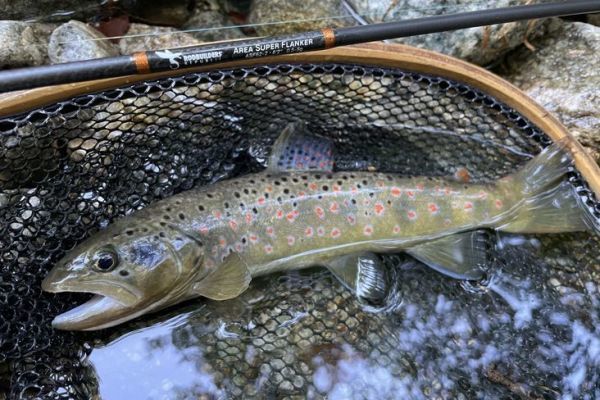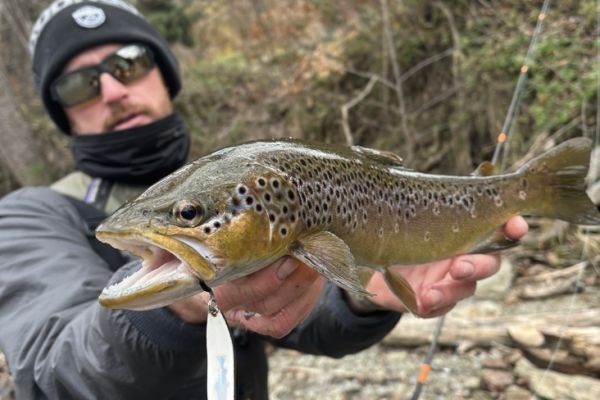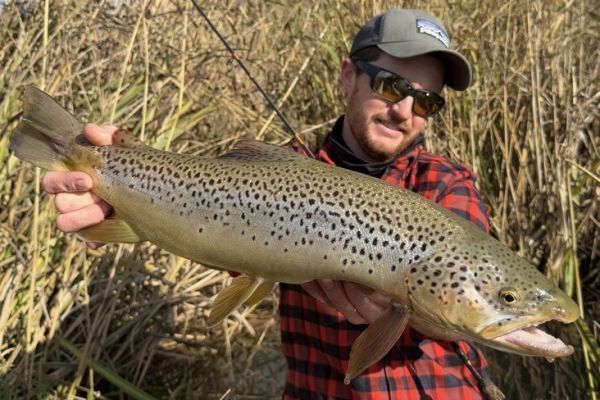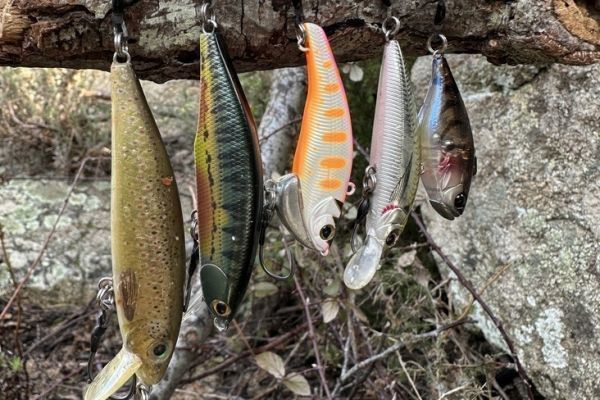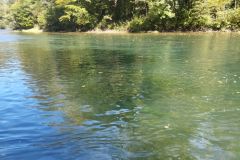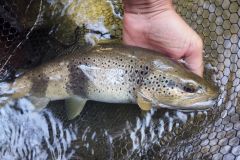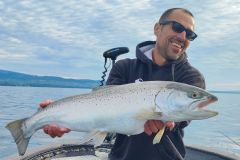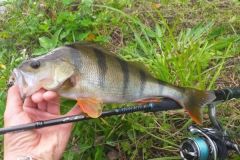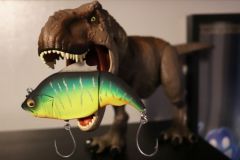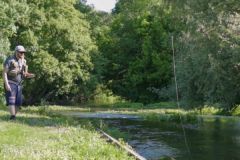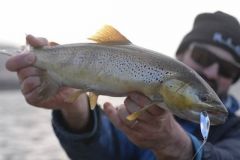Still commonly referred to as "Rapala", hard lures or swimming fish, whether they have a bib or not, are formidable when it comes to trout fishing!
The different types of hard lures for trout
There are several types of hard lures for trout fishing, and even if some are very similar, as is the case for minnows, or bib lures, their density makes them very different, both in their swimming action and in the depth at which they move.
Minnows for trout come in 3 main densities: floating, suspending and sinking.
The floats stay on the surface, as their name suggests, and during recovery sink below the surface thanks to the bib, rising instantly during breaks.
Suspension lures sink to a given depth during retrieve, but when the retrieve is stopped the lure remains completely suspended, neither sinking nor rising.
Finally, sinking minnows are denser lures that sink as soon as they enter the water, more or less quickly depending on their density.
There are also lipless lures, which also sink and generally flutter on descent.
As far as sizes are concerned, there is a wide range on the market, from the smallest swimming fish of just 3 cm, to lures that can exceed 15 cm, the choice will depend on the environment, the size of the trout sought, and above all the size of the trout's prey in the environment!
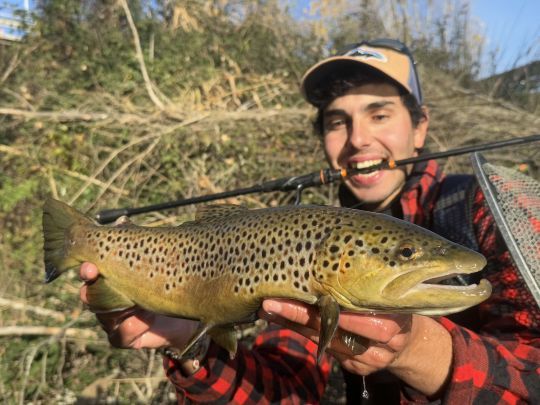
Equipment for swimming trout fishing
Unlike soft lures or wobbling spoons, swimming fish are lures that shoot into the rod, more or less strongly depending on the size of their tip. It is therefore important to choose a model that does not have a tip action that is too soft, both for comfort and for the quality of the animations!
Power will be determined by the lures most often used. For example, if the angler most often uses lures between 60 and 80 mm for a weight generally between 7 and 10 g, then a 3-12 g rod is the right choice. As for length, once again it's the environment that will determine this, although a rod between 2 m and 2m20 is a good compromise for fishing in medium-sized rivers, rivers and even lakes.
A size 2500 reel fitted with fine, strong braid (PE0.6 to PE0.8) and finished with a 0.16 to 0.28 mm fluorocarbon leader is the perfect complement. The choice of fluorocarbon diameter is a complicated dilemma: you need to keep it as fine as possible, for discretion and good presentation of the lures, but not take the risk of breaking. The parameters to take into account are the nature of the environment (sharp rocks or not, etc...) the size of the target fish, and the turbidity of the water (there's no point in going down too much in diameter if the water is heavy).
The use of staples is highly recommended, both for the ease of switching from one lure to another and for the freedom of movement given to the lures. Small, swimfish-specific clips like Duolock BKK are very discreet and durable, even in small sizes.
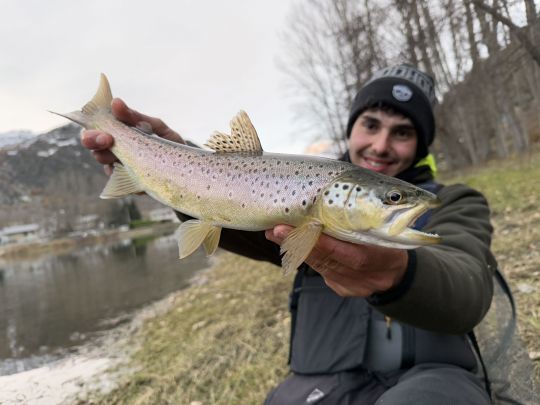
As for rigging, although swimming fish are generally fitted with treble hooks, they can be rigged with single hooks, barbed or barbless, depending on the angler's choice and the legislation in force, or with assists, which offer more suppleness during the fight, preventing the trout from taking hold and unhooking.
The various trout animations with swimming fish
In shallow river waters, it's best to use floating or suspending lures to avoid the risk of over-hooking. These lures are then retrieved either in a single line, fast enough to prospect quickly and target active fish, or by pausing for varying lengths of time.
Suspending lures can even be stopped for several seconds, leaving you fishing even if only by drifting in the current, and it's not uncommon to take a hit as soon as the animation is restarted.
As soon as the water gets deeper, in large rivers as well as lakes, the use of sinking lures takes on its full meaning. First of all, their density generally makes it possible to reach much greater casting distances, so all you have to do is let it sink to the desired depth and start a fairly rapid retrieve, interspersed with numerous twitches (small blows with the scions) which will throw the lure off balance to make it easier to identify and imitate a fleeing or wounded prey. The high density of sinking minnows also makes them easier to hold on to when the current is strong, which is generally the case when the water is high enough at opening time. Be careful, however, to fish with the rod high up to keep snags to a minimum!
As for lipless lures, which are underrated but nevertheless very effective, especially on lakes, the best animation consists in casting as far as possible, letting the lure sink while remaining very vigilant during the descent phase, as it's not uncommon to take a hit at this point. This is followed by a not-too-fast retrieve with a regular rhythm of lure strokes, a bit like animating a surface lure "walking the dog" for a few meters, then a few seconds of stretched banner pause, and so on! These lures and this animation work very well on educated fish that react less to minnows!
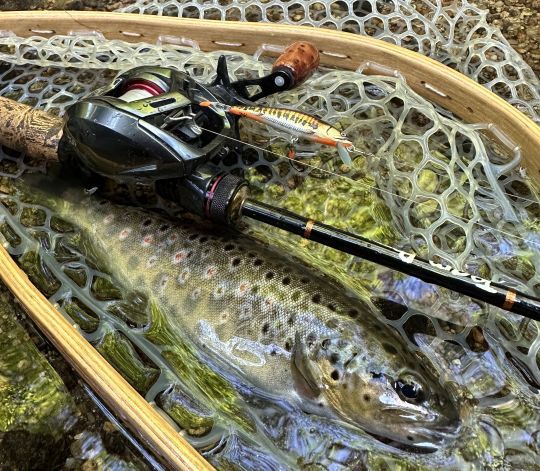
And why not swimbait? `
The articulated swimbait is a fairly specific hard lure, generally dedicated to pike and black bass, but it is also a hard lure which is starting to become more popular with anglers looking for big trout! Indeed, these multi-section lures offer a very natural and bewitching swimming action, so slow sinking models between 8 and 14 cm can be used in certain areas where trout aren't afraid of attacking large prey, and above all where anglers aren't afraid of using big lures!
Swimbaits are very easy to use, as a simple linear retrieve remains the most effective animation, and the bites are generally very violent! Perhaps a new way to stand out from other anglers at the opening, and try to capture a new record!
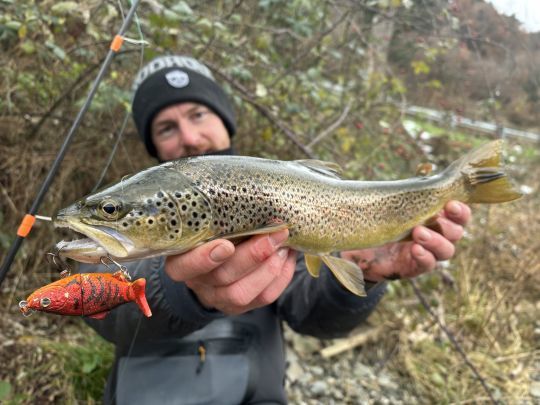

 /
/ 